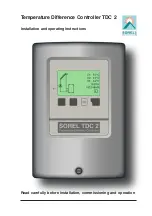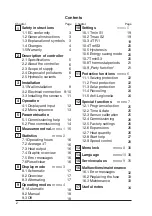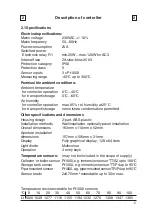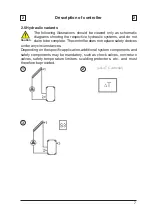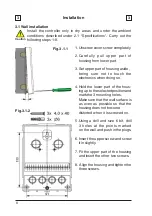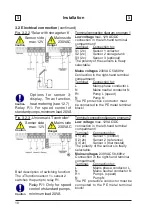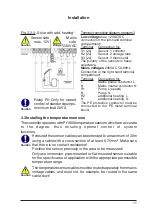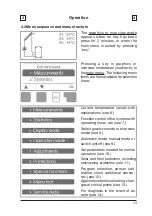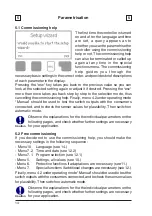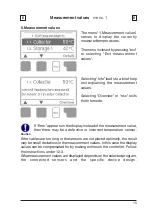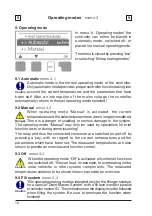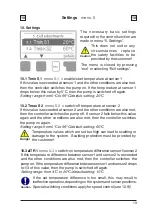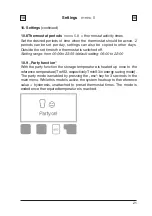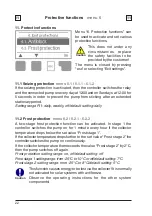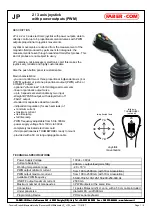
9
Installation
3
3
3.2 Electrical connection
Before working on the unit, switch off the power supply and secure
it against being switched on again! Check for the absence of power!
Electrical connections may only be made by a specialist and in
compliance with the applicable regulations.
Do not use the controller if the housing shows visible damage.
Caution
Danger
Low-voltage cables such as temperature sensor cables must be
routed separately from mains voltage cables.
Feed temperature sensor cables only into the left-hand side of the
unit, and mains voltage cables only into the right-hand side.
Caution
Caution
Fig.3.2.1
Caution
The customer must provide an all-pole disconnecting device, e.g. a
heating emergency switch.
The cables being connected to the unit must not be stripped by
more than 55mm, and the cable jacket must reach into the housing
just to the other side of the strain relief.
Relay R1 is only suitable for standard pumps (20-120VA) which are
speed-controlled viathe controller. The internal wiring of the controller
is such that residual currents flow over relay R1 even in the rest
condition. Therefore under no circumstances may valves, contactors
or other consumers with low power consumption be operated on
this output.
1.Select necessary program/
hydraulics (Fig. 3.2.2-3.2.3)
2.Open controller as described
under 3.1.
3.Strip cables by 55mmmax.,
insert, fit the strain relief devices,
strip the last 8-9mm of the wires.
(Fig. 3.2.1)
4.Open the terminals using a suit-
able screwdriver (Fig. 3.2.1) and
make electrical connections on
the controller (Page 10)
5.Refit upper part of housing and
fasten with screw.
6.Switch on mains voltage and
place controller in operation.
Summary of Contents for TDC 2
Page 35: ...35 Notes...

